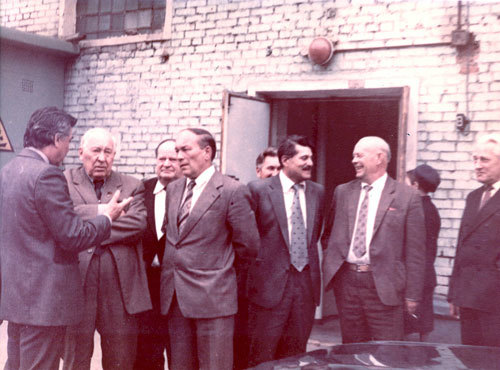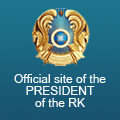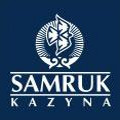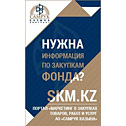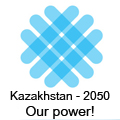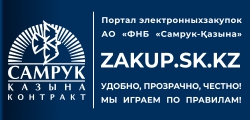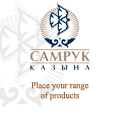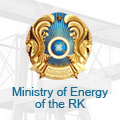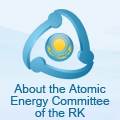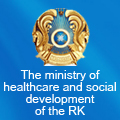Atomic Age Creators. Part 2 «Chronicle of the Plant»
UMP-Inform continues a series of materials dedicated to a special date – the 75th anniversary of the USSR Nuclear Project. In the last issue, we told about Yefim Pavlovich Slavskyi and the birth of the nuclear industry. This article is about the role of Ulba Metallurgical Plant in development of the industry.
BIRTH OF THE PLANT
So, the beginning of the Nuclear Project was made by the decision of the Council of the State Defense Committee on establishment of the First Main Department (FMD) on August 20, 1945. A bit later, in 1953, the Ministry of Medium Machine Building became the successor of the Department. In the meantime, it was the FMD that managed the nuclear industry of the Soviet Union which included Plant No. 2A in 1949, and now Ulba Metallurgical Plant.
UMP took a prominent place in FMD system. The company which was established based on the Decree of the USSR Council of Ministers on October 4, 1947, was initially planned to produce metal Thorium for processing into weapons-grade Uranium. The first batch of Thorium oxalate was manufactured on October 29, 1949. However, due to economic difficulties in the country that arose after the Great Patriotic War, the production of Thorium oxalate was postponed and the company was refocused on the new types of products.
Uranium, Beryllium and Tantalum Operations of UMP are the three pillars of the nuclear and high-tech industry without which the country's nuclear shield, peaceful energy production and modern space technologies would be simply impossible.
THE URANIUM HISTORY
The Uranium chronicle of the Plant originates from the experimental shop, launched in 1953, where the technology of future Uranium production was worked out. In 1954, the construction of workshops complex was completed– No. 3, 8, 9, 28. The production of U3O8 here began on industrial scale. In 1958, instead of U3O8, the production of Uranium tetrafluoride was started using the unique technology of Ulba employees.
On a peak of the cold war, the great share of Uranium products was processed into weapons-grade Uranium and Plutonium. They were equipped with atomic ammunition.
In 1968, after reconstruction of the building, the only famous eighth shop in the USSR for production of cores for fuel rods made of highly enriched Uranium and Beryllium for nuclear submarine reactors started working at Ulba Metallurgical Plant. The Plant's «fuel» allowed vessels to move at an unprecedented speed 80 km/h – These submarines were the breakthrough that allowed the USSR to surpass the West in military-technical terms.
Throughout its history, the Plant solved the most important scientific and production tasks set by the time. Therefore, Ulba employees worked actively on the use of unique technologies for peaceful purposes creating elements of nuclear weapons.
In early 70s, the Plant was refocused to produce products for the needs of the national economy. In the USSR that time was a period of rapid development of nuclear power that required great volumes of fuel for nuclear power plants under construction. The monopoly in the USSR for its production belonged to the company p/o A 7340 in Elektrostal. At that time, the Plant fulfilled the order of Leningrad NPP. But even at full capacity, it did not have time to produce nearly 150 tons of Uranium dioxide powder which had to be delivered no later than August 1973. Vladimir Potanin knew about this problem. Despite the fact that the Plant had never processed such quantities of enriched Uranium to ceramic grade dioxide, Vladimir Petrovich set this task for UMP. It was a fateful decision for the Plant! Further-more and by the end of the 80»s the company produced 80% of all fuel pellets for nuclear power plants of the Soviet Union and friendly countries.
In achieving these heights, we should note the merit of the Plant's team headed by two well– known Directors: Vladimir Potanin and Yuri Murin. Among the Plant»s luminaries there are Chief Engineer Vladimir Rozhdestvensky, and Chief of PTD Vladimir Plotnikov, as well as Albert Hoffman who was at the origins of establishment and development of Uranium Operations. All of them became the Laureates of State Prize of the USSR for development of subject matter of Beryllium, and Albert Hoffman was an award holder of the Council of Ministers for development of closed fuel cycle technology for nuclear power plants.
SECRETS OF BERYLLIUM
In 1956, it was decided to produce ceramic fuel elements for power plants from a composition of highly enriched Uranium and Beryllium oxide at the Plant. Three-layer composite tubes were supposed to work in a core of the reactor replacing the usual aircraft engine. The aircraft with such a reactor was built and successfully tested and such technology still remains unsurpassed. In future, it was successfully used for production of products for the needs of the national economy.
In the middle of 60»s, UMP specialists mastered industrial production of Beryllium metal and special products made from it. Beryllium products are used as casings for nuclear warheads in creation of nuclear bombs. So, with the efforts of Ulba employees the nuclear shield of the USSR was forged.
Beryllium metal products are widely used as neutron reflectors in research nuclear reactors. Due to their unique physical properties, instrument and structural grades of Beryllium developed at the Plant are irreplaceable in spacecraft, gyroscopes, aviation and mechanical engineering. Telescopic racks of a stationary lander for the study of the Earth's satellite and a number of parts of the famous «Lunokhod» as well as the brake discs of the space Shuttle»Buran» were made from Beryllium produced in Ust-Kamenogorsk.
TANTALUM BREAKTHROUGH
In 1959, Tantalum production mastered the production of powders from this metal, and in 1962 Tantalum was first smelted in ingots. In 1969, this production facility became the center for creating a unique technology for producing superconducting materials.
At that time, the country was striving to explore the secrets of atomic nucleus more deeply, and superconductors were needed for the Serpukhov proton accelerator. The implementation of the project in the Soviet Union to create thermonuclear fusion plants, the so-called TOKAMAKS, also required qualitatively new «superconductors», as they were called at the Plant. Using materials manufactured at UMP, the TOKAMAK-10 facility was the first in the USSR to produce and retain plasma at a temperature 70 million degrees!
Superalloys made from factory-made Tantalum and Niobium are also valued in the modern world. They are used for manufacturing parts of aircraft engines that meet particularly stringent requirements for strength and reliability of materials. Bone implants are also made from Tantalum which are not rejected by the human body. In general, the list of applications of these metals will take more than one page.
THE COMPANY AND THE CITY
Ulba Metallurgical Plant had a great influence on development of Ust-Kamenogorsk. Yefim Pavlovich Slavskyi who visited the company every year played a great role. It was with his light hand that Strelka was planned and built, cultural and health facilities were built and industrial companys were transformed. Yefim Pavlovich always emphasized that good work of an employee depends on decent living conditions.
AWARDS AND TITLES
During the Soviet period, eight specialists of Ulba Metallurgical Plant defended their doctoral and 57 candidate theses on the Plant»s topics. 38 Ulba employees became laureates of state and government prizes of the USSR, 646 Plant workers were honored with orders of the Soviet Union for selfless work for the benefit of the Motherland. In February 1976, Ulba Metallurgical Plant was awarded with the order «Badge of Honor» for successful completion of tasks of the ninth five-year plan for achieving high indicators in production efficiency and product quality. Yefim Slavskyi, the Minister of Medium Machine Building presented this high award to Yuri Murin, UMP Director.
THE CENTER OF SCIENCE
The high status of Ulba Metallurgical Plant in the nuclear industry is also evidenced by the fact that the Plant was regularly visited by the reputable scientists. They personally supervised various projects of the company. Thus, UMP was visited at various times by the presidents of the USSR Academy of Sciences Anatoly Alexandrov and Mstislav Keldysh, Academician, Metal Acientist Andrey Bochvar and many others. They knew that the Plant employees are able to master the most complex and most promising operations. That is why UMP regularly held scientific conferences of the Union level.
NEW HISTORY
With the collapse of the Soviet Union, the Plant as well as the entire nuclear industry faced difficult times. Sensitive to the needs of a large country during this period, UMP was in a sense «out of business». Everything changed with creation of the national company «NAC» Kazatomprom JSC which included the Plant. However, current development of nuclear power and high technologies is a completely different story. Read it in the next issue.
NO ONE IS LEFT BEHIND
As part of the nuclear industry anniversary celebration in 2020, many events are planned.
In autumn, Sochi will host World Atomic Week – an International Congress of supporters of nuclear energy. In December, the legendary Nuclear Energy pavilion at VDNKh will start working in Moscow. In addition to installing a monument to Yefim Slavskyi, we wrote about it in the last issue, commemorative plaques to the heads of the nuclear industry-Mikhail Pervukhin, Avraamiy Zavenyagin, Andranik Petrosyants and Vitaly Konovalov will be unveiled.
This is a very significant event for our company since Vitaly Konovalov worked at Ulba Metallurgical Plant from 1956 through 1975 starting his career as a Foreman-Alternate. Later, he became the Head of Workshop No. 10, now-Tantalum Operations. From 1989 through 1991, Vitaly Fedorovich held the position of the Minister of Nuclear Energy and Industry of the USSR.
Alexey Proskuryakov
